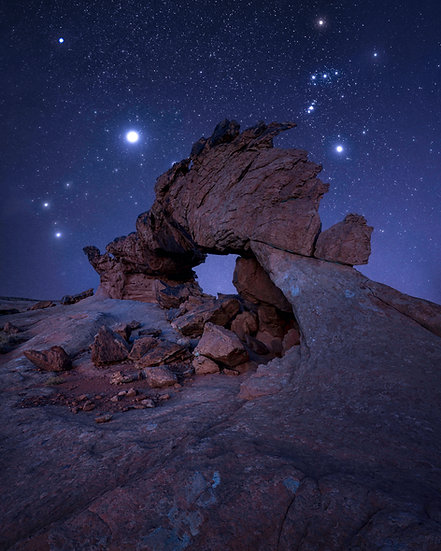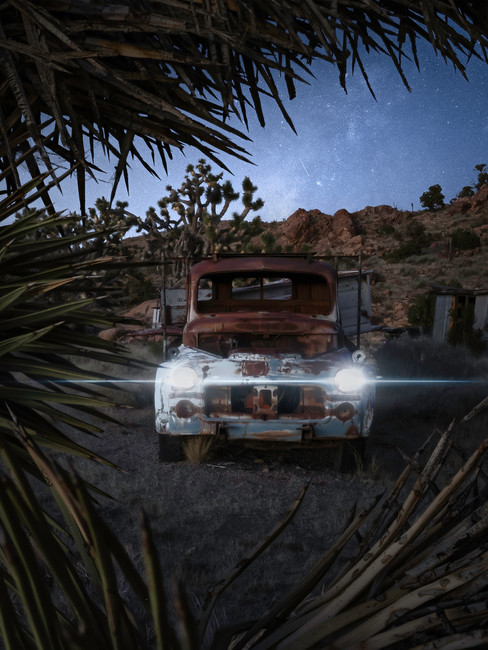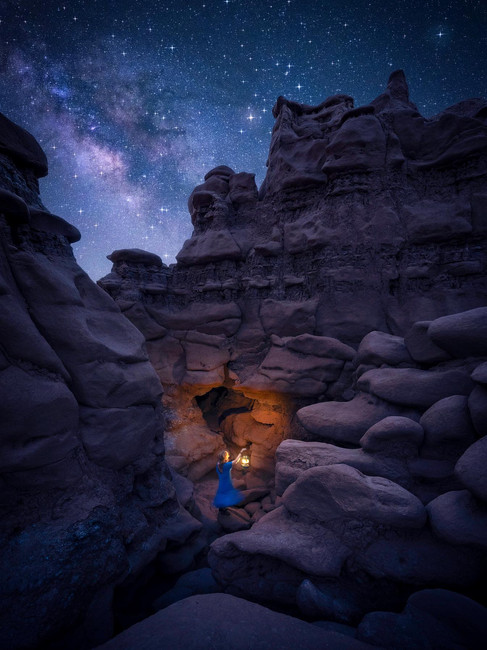The American Southwest, full of iconic landscapes is more than just a land of rocks, cacti, cliffs and buttes —it’s also a stargazer’s paradise. With its high elevations, minimal light pollution, and big wide open, endless horizons, the Southwest offers some of the best stargazing opportunities in the United States. If you’re an amateur astronomer, astrophotographer, space nerd or just looking to impress your friends with your knowledge of constellations, these top stargazing spots will make you fall head over heels in love with our night sky (just hopefully not over a cactus).
Grand Canyon National Park, Arizona
Sure, the Grand Canyon is impressive during the day—its epic views and sheer size have left many a visitor speechless (and possibly dizzy). But after nightfall… When the tourists head back to their hotels, the canyon reveals its second act: a sky filled with more stars than you’ve ever seen. In fact during our Dark Sky Week 2023, this measured the best for dark, clear, skies, making it the darkest dark sky park we visited last year. The annual Grand Canyon Star Party is like Comic-Con for astronomers, minus the cosplay (but wouldn’t that be fun). Here, you can look through telescopes, take a constellation tour with a ranger, and listen to nightly speakers.
The North Rim of the Grand Canyon.
Death Valley National Park, California
Death Valley: the name alone conjures up images of barren deserts and scorching heat. But as soon as the sun sets, the sky erupts in thousands of stars. As one of the driest places on Earth, Death Valley has little moisture or cloud cover to mess with your view of the stars. Plus, there’s almost zero light pollution. It’s just you, the stars, and maybe a coyote or two. If you’ve ever wanted to feel like you’re on Mars without the whole “no atmosphere” thing, Death Valley is your spot. We are finally back in Death Valley in 2025 for our annual astrophotography workshop, you can join us in exploring the lesser known parts of the park.
Some of my favorite stargazing (and photographing) Spots in Death Valley National Park.
Sedona, Arizona
Sedona is well-known for its vortexes, those mystical energy fields that are said to enhance your spiritual experiences. But even if you’re skeptical about that sort of thing, there’s no denying the cosmic vibes when the stars come out. Thanks to Sedona’s strict light pollution regulations, the stars here shine bright enough to make you forget all about your Wi-Fi connection. Join a stargazing tour and get the lowdown on constellations from astronomers who probably know more about the sky than Google. Or if your thing is to take pretty pictures of the stars, check out our Spring in Arizona Workshop.
Some of the most iconic views in Sedona and both great places to watch the stars.
Tonto National Forest, Arizona
Tonto National Forest is the kind of place where you can lose yourself (hopefully not literally) among cacti and pine-covered mountains. This forest has plenty of secluded spots perfect for stargazing, and with minimal light pollution, you’ll see so many stars that may make you city folk wonder if you’ve been living in a giant lampshade all your lives. Plus, the name Tonto might make you think of old Westerns, so feel free to imagine yourself as a stargazing cowboy under the big sky.
If you want to know what it was like back in the days of the wild west, just visit Tonto National Forest.
Grand Staircase-Escalante National Monument, Utah
Grand Staircase-Escalante kind of sounds like a complicated dance move, but it’s actually got its name from the series of plateaus and cliffs that gradually increase in elevation from south to north, resembling a staircase. And it’s one of the most remote stargazing spots in the Southwest. This was actually the first place where I ever saw the dark horse nebula with just my eyeballs. The unique rock formations create dramatic backdrops for night photography, so be sure to bring your camera (and maybe a map, just in case you get lost in the maze of dirt roads, or you join us this May for an epic night photo workshop that even includes telescopes, deep space and space nerd chats around the camp dinner.
This remote location is full of arches, canyons and unique rock formations.
Mojave National Preserve, California
Mojave National Preserve is a stargazer’s dream come true, especially for those who like their starry nights served with a side of solitude. This vast desert is far enough from the bright lights of Los Angeles and Las Vegas to offer incredibly dark skies. The preserve’s unique landscape, including the famous Kelso Dunes, eerie Joshua trees and many abandoned gold rush mining operations provide stunning foregrounds for night photography. But, watch out for the occasional jackrabbit or kangaroo rat—they might not appreciate your intrusion into their nocturnal activities.
Such a fun place to explore, just make sure you have the right rig, these roads are tough.
Capitol Reef National Park, Utah
Capitol Reef might not be as famous as its Utah cousins, but it’s got something they don’t: super dark skies. Despite their Dark Sky Park status, it’s more well known cousins have Moab light pollution, but this park is a hidden gem for stargazers, offering a better stargazing show without the crowds. Capitol Reef’s annual Astronomy Festival is your chance to geek out with fellow star lovers, learn from experts, and maybe even spot a UFO (no promises, though). With its remote location and minimal light pollution, this park is a dream come true for anyone looking to escape the city lights.

There are some amazing backcountry locations in this National Park.
Goblin Valley State Park, Utah
Goblin Valley State Park isn’t just a name—it’s a whole vibe. The park is filled with bizarre rock formations that look like they’ve been sculpted by mischievous goblins, and when the sun dips below the horizon, these strange shapes take on an even more otherworldly feel (almost like you have goblin friends stargazing with you).. The dark skies here are perfect for staring up at those beautiful balls of light, and the unique landscape makes for some seriously cool night photography. This one is always a favorite at Dark Sky Week.
Literally my favorite way to photograph Goblin Valley and explore it (with a lantern)
Bisti/De-Na-Zin Wilderness, New Mexico
The Bisti/De-Na-Zin Wilderness, also known as the Bisti Badlands, is like something out of a sci-fi movie. With its weird rock formations and eerie silence, this place feels like the set of an alien planet. But it’s not just the landscape that’s out of this world—the night skies are, too. Far from any city lights, the Bisti Badlands offer some of the best stargazing in New Mexico. Easily one of my favorite places for night photography, I look forward to this workshop every year. So, if you’ve ever wanted to feel like an astronaut exploring a the moon, this is the place to do it (no spacesuit required).
If you ever wanted to explore the moon this is the place to play pretend.
Joshua Tree National Park, California
An honorable mention because of it's dark sky park status, Joshua Tree National Park is Known for its iconic Joshua trees and surreal rock formations, this park is also a stargazing hotspot. The clear desert skies and minimal light pollution make it perfect for spotting the Milky Way, constellations, and even the occasional UFO (okay, maybe not, but it’s fun to imagine). Plus, Joshua Tree is just a few hours’ drive from Los Angeles, making it a convenient escape from the city lights. Grab a blanket, find a comfy rock, and get ready to be dazzled by the stars.
So many different ways to photograph these unique trees under the stars.
Now Go See Some Stars!
The American Southwest is home to some of the best stargazing spots on the planet, offering clear skies, minimal light pollution, and landscapes that are as stunning by night as they are by day. These locations offer an unforgettable stargazing experience, exploring the jaw dropping views at the Grand Canyon, marveling at the dark skies of Death Valley, or getting lost among the stars in Sedona, grab your telescope, pack a blanket, and get ready to be amazed by the night skies of the Southwest.



































Great article Jess!! Thank You!!!